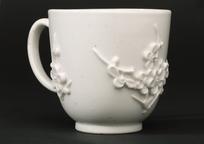

Greek drinking cup (kylix)
- Made:
- 500-480 BCE in Greece

Greek drinking cup (kylix), Attic black glaze, 500 to 480 BC, has been repaired
Earthenware is a low fired ceramic material that is porous unless glazed. Most clays can be used for pottery and the main colours are buff, grey, red and cream. Red earthenware is often called terracotta. Any ceramic with a maximum firing temperature of about 1050 degrees centigrade is essentially an earthenware. At such temperatures earthenwares are not vitrified and remain porous, but the addition of a glaze can render them impervious. Earthenware objects were the first ceramic items to be produced.
Details
- Category:
- Ceramics
- Collection:
- Sir Henry Wellcome's Museum Collection
- Object Number:
- 1981-320
- Materials:
- glaze
- type:
- cup
- credit:
- On loan from the Wellcome Trust

